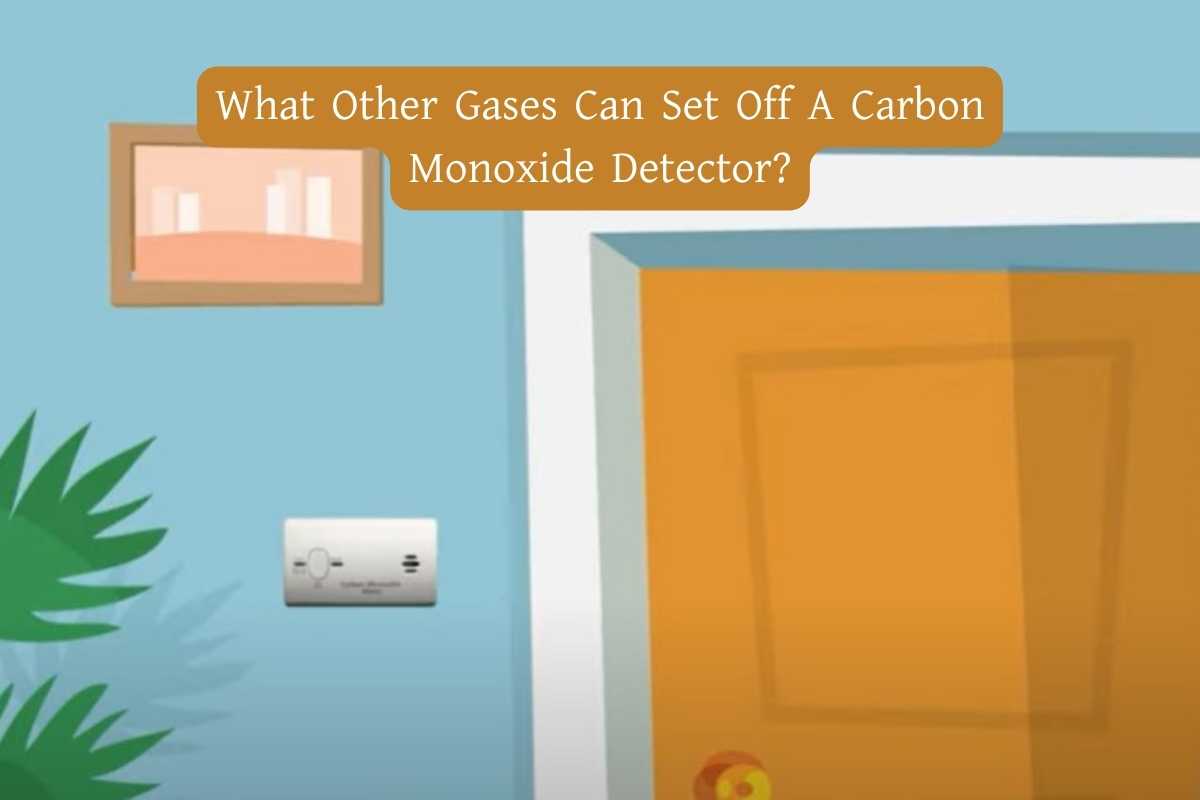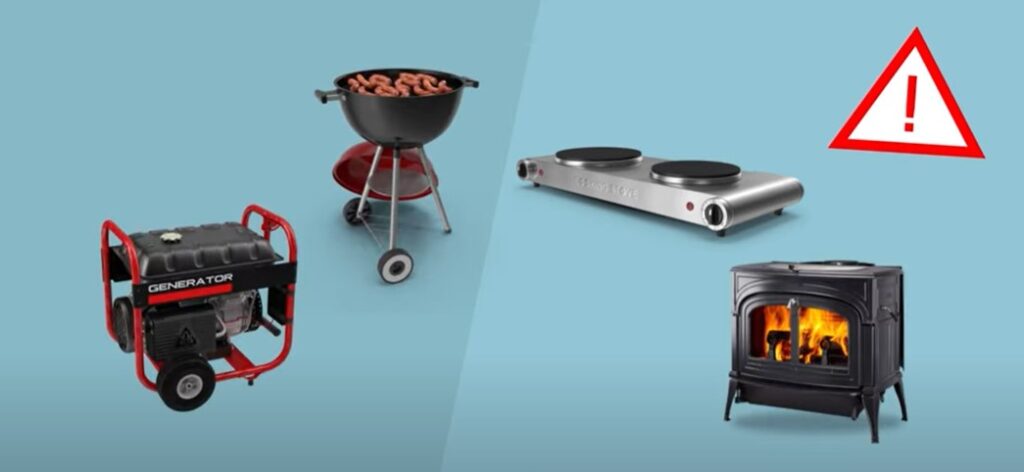Phone:
(701)814-6992
Physical address:
6296 Donnelly Plaza
Ratkeville, Bahamas.

Carbon monoxide (CO) detectors aren’t just gadgets; they’re our silent guardians against a lurking danger. But have you ever wondered if they’re tuned into more than just CO?
Today, let’s embark on a journey into the intriguing universe of gases that might trigger our CO detectors. We’re on a quest to uncover whether they’re attuned to other gases too.
So, join us as we venture into the realm of carbon monoxide detectors to unravel the mysteries of their gas-detecting capabilities.

Imagine having a tiny superhero on your wall, always on the lookout for a sneaky, invisible villain. That’s what a Carbon Monoxide (CO) detector is – your very own superhero!
When our superhero detects the invisible villain, it shouts, “Beep, Beep!” to warn us. But wait, who’s this invisible villain?
Carbon Monoxide is like a ghost—you can’t see it, but it’s there! This gas is highly toxic and can be deadly if inhaled in large quantities. Our detector doesn’t like this ghost, and it lets us know when it’s around.
While carbon monoxide is the main gas detected by these devices, modern detectors may also be sensitive to other gases, providing an added layer of safety.
Some of the gases that carbon monoxide detectors can detect include:

Sometimes, natural gas can be a little naughty and make the detector beep. It’s like a playful friend giving the detector a tickle.
Natural gas, composed mainly of methane, is widely used for heating and cooking in homes and businesses. While natural gas is naturally odorless, an odorant called mercaptan is added to give it a distinctive “rotten egg” smell.
However, in some cases, the odorant may dissipate or become less noticeable, making it difficult to detect gas leaks.
Carbon monoxide detectors sensitive to natural gas can provide an additional layer of protection against leaks and potential hazards.
Propane is another friend of the detector. If it’s around, the detector might beep to say, “Hello!”
Propane is a flammable gas that can pose a threat if leaked into the home environment. It is commonly used as a fuel for heating, cooking, and powering appliances such as grills and generators.
Carbon monoxide detectors capable of detecting propane can provide early warning of leaks, allowing residents to take swift action to mitigate the danger.
Like methane and propane, butane is colorless and odorless, making it difficult to detect without specialized equipment. It is also a highly combustible gas that is frequently used in cigarette lighters, portable stoves, and camping equipment.
Carbon monoxide detectors with butane sensors can help detect leaks, reducing the risk of fire and explosion.
Oh, the drama of smoke! If there’s too much smoke, the detector might think it’s a superhero party and join in with a beep.
The Sensor’s Superpowers
Our detector has a superpower – a sensor that sniffs the air. When it smells something fishy, it beeps to protect us.
False Alarms – A Detector’s Prank
Sometimes, detectors can be playful and beep when there’s no danger. It’s like their way of telling a little joke. Silly detectors!
No, humidity typically doesn’t trigger a carbon monoxide detector. These detectors are specifically designed to sense carbon monoxide (CO) gas, not moisture in the air.
So, while a humid environment might affect other electronic devices, it shouldn’t set off a CO detector.
Yes, other factors like cigarette smoke, household cleaners, or certain chemicals might trigger false alarms on a carbon monoxide detector. However, these detectors are primarily calibrated to detect carbon monoxide gas, so if they’re going off frequently for other reasons, it’s best to investigate and possibly replace the detector.
Most carbon monoxide detectors are designed solely to detect carbon monoxide gas. While there are multi-gas detectors available that can sense various gases, a standard carbon monoxide detector won’t pick up other gases like methane or propane.
Sewer gas, which primarily consists of methane, hydrogen sulfide, and other gases, generally shouldn’t set off a carbon monoxide detector. These detectors are specifically calibrated to sense carbon monoxide gas, so unless there’s a significant presence of CO in the sewer gas, it shouldn’t trigger the detector.
Typically, no. Poop doesn’t emit carbon monoxide gas in quantities sufficient to set off a carbon monoxide detector. These detectors are designed to sense CO, which is produced by incomplete combustion of fuels, not organic matter like feces.
No, a fart typically cannot set off a carbon monoxide detector. Carbon monoxide detectors are designed to detect the presence of carbon monoxide gas, which is produced by the incomplete combustion of fuels.
Farts primarily consist of gases like methane, hydrogen, and carbon dioxide, none of which should trigger a carbon monoxide detector.
However, if there’s an unusual concentration of other gases present, it might be wise to check the detector’s functionality and the ventilation in the area.
Propane gas itself won’t trigger a carbon monoxide detector directly. However, if there’s incomplete combustion of propane, leading to the release of carbon monoxide, then the detector might go off. It’s essential to ensure proper ventilation and maintenance of propane-fueled appliances to prevent CO buildup.
A gas monitor can detect various gases depending on its specifications, but common gases include carbon monoxide, methane, propane, hydrogen sulfide, and oxygen levels.
Gas detectors can measure various gases, but common types include carbon monoxide (CO), methane (CH4), propane (C3H8), hydrogen sulfide (H2S), and oxygen (O2) levels.
If a carbon monoxide alarm goes off, immediately evacuate the premises and move to fresh air. Contact emergency services and inform them about the alarm. Do not re-enter the building until it’s been cleared by professionals.
Additionally, if anyone is experiencing symptoms of carbon monoxide poisoning (such as headaches, dizziness, or nausea), seek medical attention promptly.
PPM: The Detective Language
Detectors speak a language called PPM – Parts Per Million. It’s like their secret code to tell us how much of the invisible villain is around.
What’s Normal and What’s Not?
Detectives like things to be normal. If the PPM gets too high, it means trouble. But don’t worry, we’ll learn how much is normal and how much is not.
There are actually two different perspectives on what’s considered “normal” for a CO detector’s reading, depending on who you ask:
From a safety standpoint:
From a detector sensitivity standpoint:
Therefore, while 0–9 ppm is ideal, not triggering an alarm below 30 ppm doesn’t necessarily mean there’s no risk. It’s crucial to understand both perspectives and take appropriate action based on the specific situation and your detector’s specifications.
Regular Check-ups – Just Like Going to the Doctor!
Detectors need check-ups too! Make sure they are working well by pressing their buttons regularly.
Changing Batteries – A Detox for Detectors
Just like we need healthy food, detectors need fresh batteries. Change them once a year for a happy, beeping friend.
In this adventure, we learned that our beeping friend is a superhero, protecting us from invisible villains. Beep, beep means danger, but we can help by keeping our superhero happy and healthy. Remember, detectors are our tiny heroes!